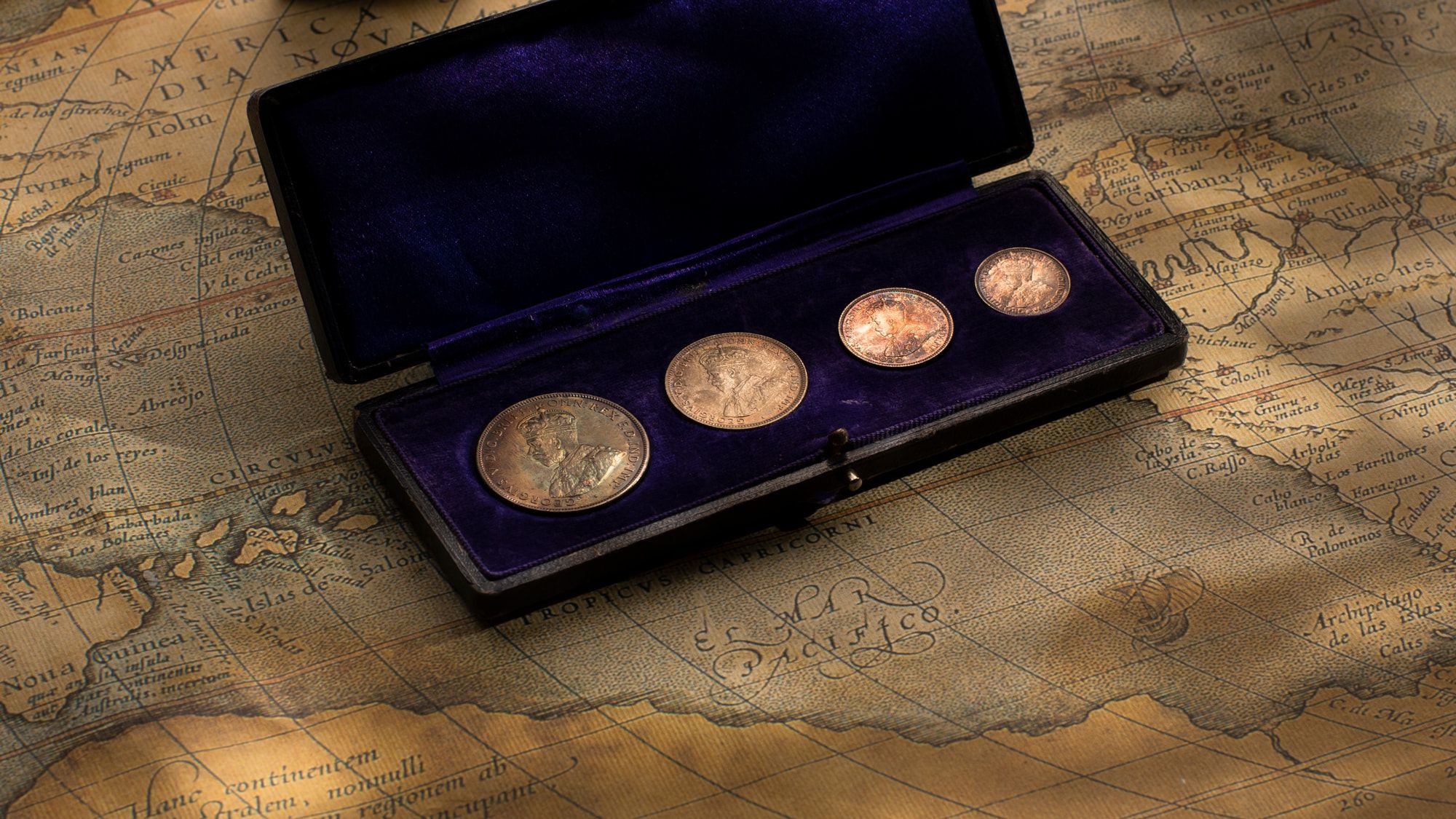1916 Presentation Set in original case of issue



Early in November 1915 the Melbourne Mint was formally instructed to commence preparations for the striking of the Commonwealth's silver coinage. The silver was sourced locally from the Broken Hill mines. (Prior to 1915, the nation's silver coinage had been minted overseas at the Royal Mint London and the Heaton Mint in Birmingham.)
Towards the end of November 1915, dies for the set of four denominations were sent from London.
Six weeks after the dies were shipped, the Governor of Victoria Sir Arthur Stanley K.C.M.G, struck the first circulating 1916 shilling. it is logical that the Melbourne Mint would begin striking silver coinage with the shilling denomination given its similar physical size to their familiar sovereign.
The florin was struck almost immediately after, sixpences by the middle of 1916 with the threepences finally in December.
More than 11.5 million silver coins were released into circulation that year.
The availability of the four-coin specimen presentation set was confirmed in November 1916 when Albert Le Souëf, the Deputy Mint Master of the Melbourne Mint, recorded an entry of sixty specimen sets in the Mint Museums’ cash accounts with a face value of £11 5/-.
Each presentation set was comprised of the four silver coins of florin, shilling, sixpence and threepence struck to specimen quality and featured the Melbourne mint mark ‘M’ below the date 1916. The four coins were housed in a handsome, velvet-lined royal blue case that had been locally sourced.
While records show that 60 sets were produced, sixteen were sold, collectors charged 6/- for a cased set. A further 25 sets out of the original mintage were presented to dignitaries and politicians with the precise fate of the remaining sets unknown.
What we do know is that many of the cases have been lost and many of the sets have been broken up and sold as individual coins. We also know that others were accidentally used as circulating coins, their value irreparably reduced through wear.
Over the past 50 years we have sighted only seven complete cased sets on the open market.
A close examination of the coins in this particular set confirm that:
The Specimen Threepence.
The Specimen Threepence has a full brilliant mirror finish with handsome royal blue and gold toning. Given the uncompromising small size and weight of the threepence, this coin is extremely well struck, noticeable in the strength of strike in the star, shield and scroll. Microscopic striations confirm the careful preparation of the dies.
The Specimen Sixpence.
The Specimen Sixpence has beautifully mirrored fields and is very well struck. The denticles on the reverse rim, which tend to be weak, are unusually strong. Again, microscopic striations confirm the careful preparation of the dies.
The Specimen Shilling.
The Specimen Shilling is superbly struck and beautifully toned. The reverse reveals multiple striations (raised parallel lines) across its fields; with those between the scroll and date and behind the emu visible to the naked eye.
The Specimen Florin.
The Specimen Florin is beautifully struck, with superb detail in all its design elements. With even matte surfaces and beautiful purple gold toning on the reverse and olive green toning on the obverse, the coin shows the classic striations associated with this controlled striking.
© Copyright: Coinworks